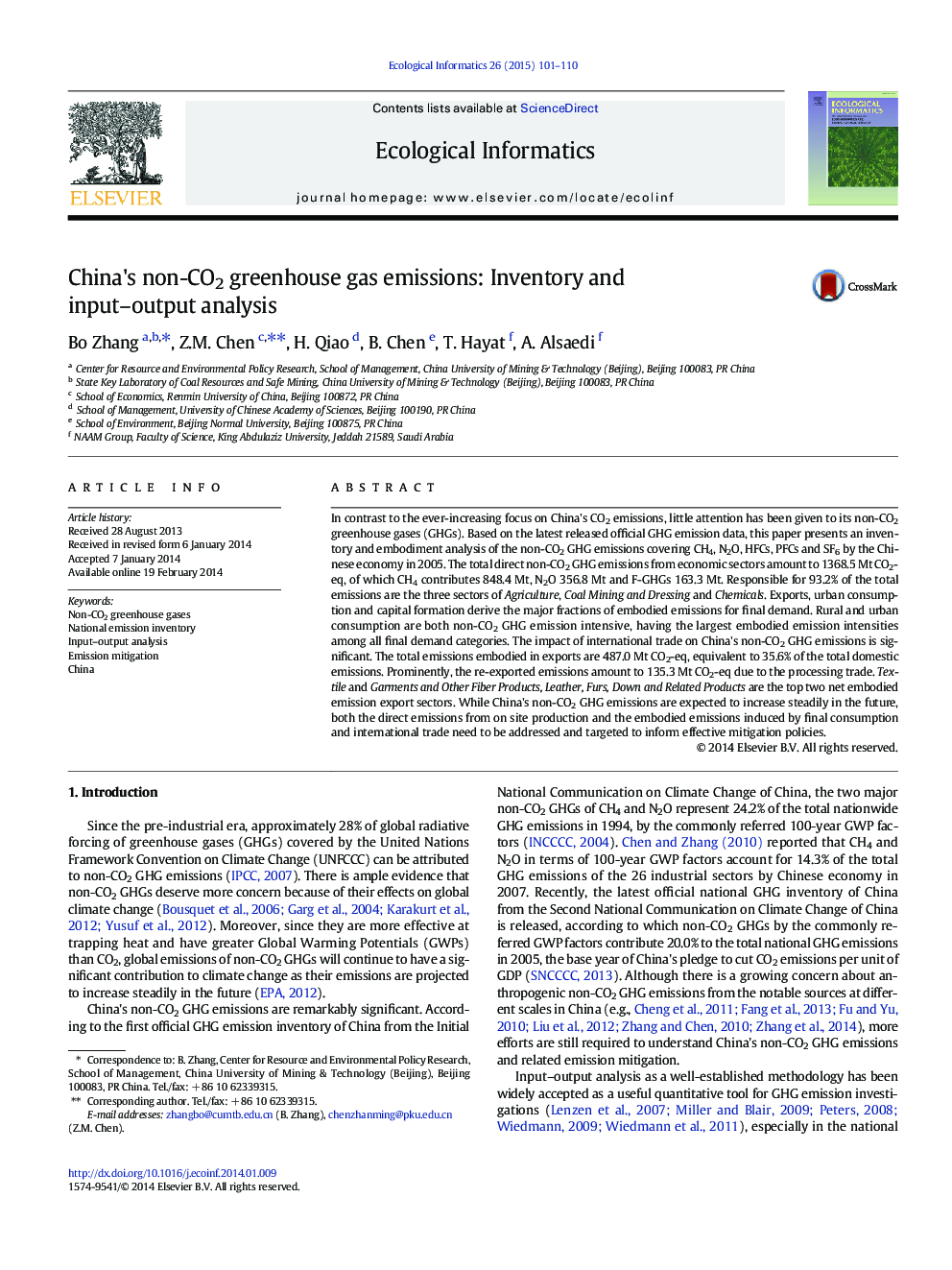| Article ID | Journal | Published Year | Pages | File Type |
|---|---|---|---|---|
| 4374861 | Ecological Informatics | 2015 | 10 Pages |
•An inventory and embodiment analysis of China's non-CO2 GHG emissions is presented.•China's non-CO2 GHG emissions from economic sectors amount to 1368.5 Mt CO2-eq.•The impact of international trade on the embodied GHG emissions is significant.•Both the direct and embodied emissions need to be addressed in emission mitigation.
In contrast to the ever-increasing focus on China's CO2 emissions, little attention has been given to its non-CO2 greenhouse gases (GHGs). Based on the latest released official GHG emission data, this paper presents an inventory and embodiment analysis of the non-CO2 GHG emissions covering CH4, N2O, HFCs, PFCs and SF6 by the Chinese economy in 2005. The total direct non-CO2 GHG emissions from economic sectors amount to 1368.5 Mt CO2-eq, of which CH4 contributes 848.4 Mt, N2O 356.8 Mt and F-GHGs 163.3 Mt. Responsible for 93.2% of the total emissions are the three sectors of Agriculture, Coal Mining and Dressing and Chemicals. Exports, urban consumption and capital formation derive the major fractions of embodied emissions for final demand. Rural and urban consumption are both non-CO2 GHG emission intensive, having the largest embodied emission intensities among all final demand categories. The impact of international trade on China's non-CO2 GHG emissions is significant. The total emissions embodied in exports are 487.0 Mt CO2-eq, equivalent to 35.6% of the total domestic emissions. Prominently, the re-exported emissions amount to 135.3 Mt CO2-eq due to the processing trade. Textile and Garments and Other Fiber Products, Leather, Furs, Down and Related Products are the top two net embodied emission export sectors. While China's non-CO2 GHG emissions are expected to increase steadily in the future, both the direct emissions from on site production and the embodied emissions induced by final consumption and international trade need to be addressed and targeted to inform effective mitigation policies.
